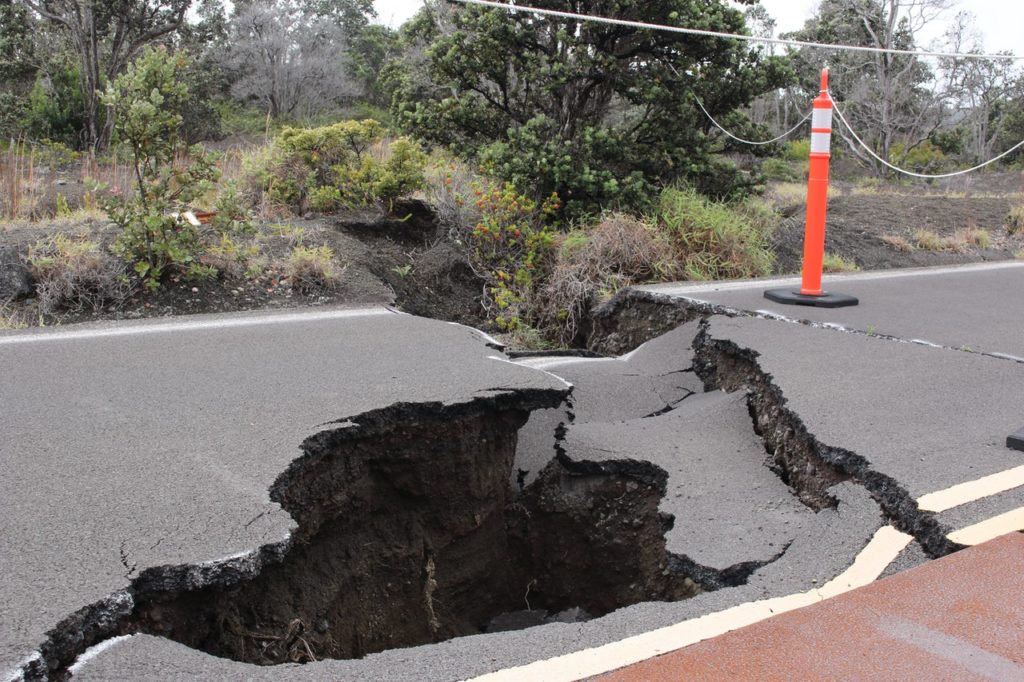
I learned this today. The Richter scale is a way of measuring the strength of an earthquake by looking at the height of its seismic wave.
The Richter scale was developed in 1935 by Charles Francis Richter. He was an American physicist who was very interested in seismology. He came up with his system because the system it replaced wasn’t effective enough. This system was called the Mercalli scale.
The Mercalli scale was created in 1902 by an Italian priest called Guiseppe Mercalli and it was in turn a reworking of the Rossi-Forel scale, which was the first scale developed to measure earthquakes. The Mercalli scale measures the effects of an earthquake on structures and people. It had ten levels when Mercalli made it, it has 12 levels now. Level one is “Not felt, except by very few under especially favorable conditions” and level twelve is “Damage is total. Waves are seen on ground surfaces. Line of sight and level are distorted. Objects are thrown upward into the air.”
The Mercalli system is useful for the effects of an earthquake, but it isn’t very useful for measuring the strength of the earthquake. The effects of the earthquake could vary depending on the types of structures built over it.
Richter decided that a different type of scale was needed. He was very interested in seismology, which is studying the way that seismic waves move through the Earth. Seismic waves are created when something inside the Earth’s mantle moves to create a shockwave. This could be a tectonic plate moving, or a volcano erupting. There are two main types of seismic waves: body waves and surface waves.
Body waves are the seismic waves that travel through the Earth. They are broken up into P-waves and S-waves. P-waves are pressure waves, and they are the first waves to be recorded because they travel extremely quickly. They can reach speeds of 5 km/s through rock. S-waves are secondary waves. They travel more slowly, but they have a larger amplitude, and they can be more destructive.
Surface waves are waves that travel just under the surface of the Earth. They are much larger in amplitude and are even more destructive. They usually happen when an earthquake is close to the surface. They cause the ground to move up and down or to shear.
After several developments in the study of earthquakes and seismology in the 1930s, Richter came up with his scale. (It was actually made in collaboration with another seismologist called Beno Gutenberg, but the scale became known as the Richter scale. Richter himself didn’t actually call it that. He called it the “magnitude scale”.) Richter decided that the scale should be made by measuring the height of the largest seismic wave at a specific distance from the source.
He also made the scale logarithmic. That means each step is ten times greater than the one before it. A 5 is ten times more intensive than a 4, one hundred times more intensive than a 3, and a thousand times more intensive than a 2. However, the amount of energy released doesn’t go up tenfold. The amount of energy released with each step goes up by 31.7 times.
The Richter scale was used until the 1970s when it was replaced by the Moment Magnitude Scale. The main problem with the Richter scale was that it couldn’t really be used for deeper earthquakes, and it didn’t calculate the energy released effectively. So, we no longer use the Richter scale, but the media and most people still use the word without realizing that what they are talking about is no longer the Richter scale.
Incidentally, the largest earthquake ever experienced on Earth is the 1960 Great Chilean earthquake. It reached 9.5 on the moment magnitude scale. The Great San Francisco Earthquake of 1906 was an 8, so the Chilean earthquake was over 10 times greater.
Geologists believe that 10 is the largest earthquake we could ever have on Earth because the tectonic plates would not be capable of producing a bigger one. Studies in Japan have shown that if all 3,000 km of the faults from the Japan Trench to the Kuril-Kamchatka Trench ruptured at the same time, it could produce a 10, but this is extremely unlikely. Worldwide, we have millions of earthquakes a year that are under 2, but only 1 every 50 years that is over 9. A 10 could be a once in 10,000 years.
So, the Richter scale works by measuring the height of the seismic wave at a certain distance. It is a logarithmic scale. It is also no longer used, even though we all still use the word. And this is what I learned today.
Photo by Wilson Malone: https://www.pexels.com/photo/orange-and-white-traffic-pole-on-cracked-gray-asphalt-road-4558211/
Sources:
https://en.wikipedia.org/wiki/Richter_magnitude_scale
https://en.wikipedia.org/wiki/Moment_magnitude_scale
https://en.wikipedia.org/wiki/Charles_Francis_Richter
https://en.wikipedia.org/wiki/Modified_Mercalli_intensity_scale
https://en.wikipedia.org/wiki/Rossi%E2%80%93Forel_scale
https://science.howstuffworks.com/nature/natural-disasters/earthquake6.htm
https://www.sms-tsunami-warning.com/pages/richter-scale#.YqsmbHbP3cs
https://www.mtu.edu/geo/community/seismology/learn/seismology-study/
